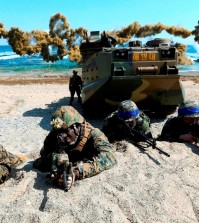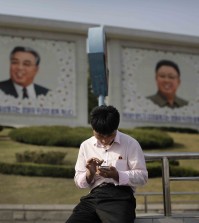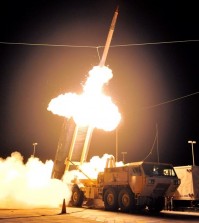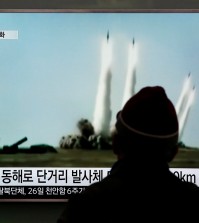- California Assembly OKs highest minimum wage in nation
- S. Korea unveils first graphic cigarette warnings
- US joins with South Korea, Japan in bid to deter North Korea
- LPGA golfer Chun In-gee finally back in action
- S. Korea won’t be top seed in final World Cup qualification round
- US men’s soccer misses 2nd straight Olympics
- US back on track in qualifying with 4-0 win over Guatemala
- High-intensity workout injuries spawn cottage industry
- CDC expands range of Zika mosquitoes into parts of Northeast
- Who knew? ‘The Walking Dead’ is helping families connect
N.K. building facility to build more powerful nuclear bombs
WASHINGTON (Yonhap) — A new facility under construction at North Korea’s Yongbyon nuclear complex appears to be designed to separate isotopes from spent fuel that can be used in building nuclear weapons more powerful than plutonium or uranium bombs, a U.S. research institute said Tuesday.
The assessment from the Institute for Science and International Security adds to growing concern that the communist nation is ramping up efforts to further strengthen its nuclear capabilities and could carry out its fourth nuclear test.
Satellite imagery of the new building being constructed shows signatures that are “consistent with an isotope separation facility, including tritium separation,” the institute said, adding that the assessment is also shared by a government expert who has long experience in assessing activities at the Yongbyon site.
The building, if confirmed as an isotope separation facility, would separate isotopes from spent nuclear fuel rods from the 5-megawatt reactor, the North’s main plutonium-producing reactor, the institute said. Though the reactor is not an ideal producer of isotopes, it can be used in that way, it added.
The North’s focus could be to produce tritium, an isotope that can be used in making more sophisticated nuclear weapons, it said.
“North Korea has stated repeatedly its intention to improve the quality of its nuclear weapons, and tritium would enable nuclear weapons designs that could have a greater explosive yield than weapons made from only plutonium or weapons-grade uranium,” the institute said.
“Whether North Korea can make nuclear weapons using tritium is unknown although we believe that it remains a technical problem North Korea still needs to solve. Solving this problem would likely require more underground nuclear tests,” it said.
Earlier Tuesday, the North said that all nuclear facilities at the complex, including the uranium enrichment plant and the 5-megawatt nuclear reactor, have started normal operation. It also said it is trying to improve the “levels of nuclear weapons with various missions in quality and quantity.”
But the institute said the reactor was operating intermittently as of August.
“The satellite imagery taken Aug. 22 does not show a steady stream of water being discharged from the reactor’s discharge pipeline, which is considered the main sign of full-reactor operation,” it said.
As for the North’s claim about the uranium enrichment plant, the institute said that the available information does not confirm the plant’s operation, but nothing contradicts the North’s statement the plant is operational.















